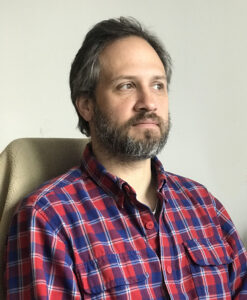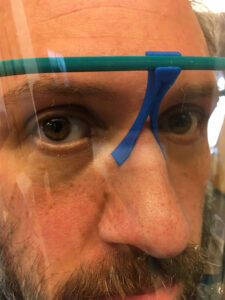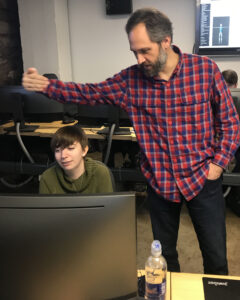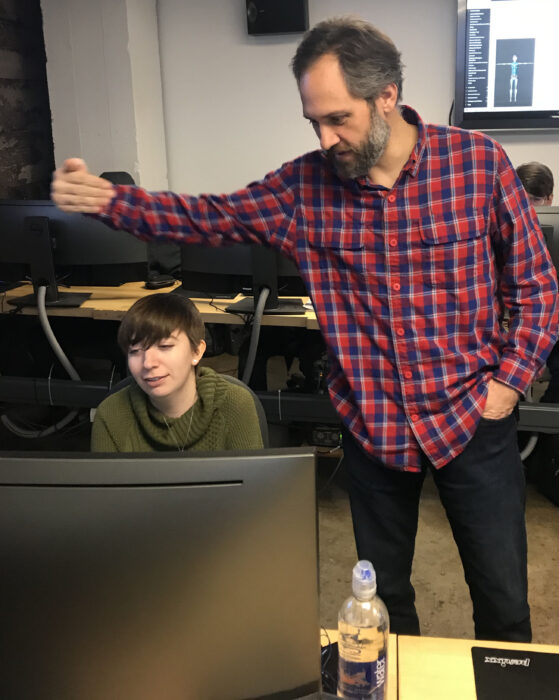Art + Design Faculty Joshua Albers puts innovation to use.

At the beginning of the move to flatten the curve for COVID-19, Joshua Albers, assistant professor in the Art + Design Department, reached out to the Jordan Valley Innovation Center (JVIC) in their collaboration with CoxHealth to see if there was a way he, his students, and the department could contribute.
“CoxHealth had a supply of plastic frames that could be used to create lightweight eye shields,” shares Joshua, “but medical workers needed a full-face shield to help protect from airborne droplets that could transmit the virus.” With insight provided by CoxHealth, Jonathan Keeth, research technician at JVIC, designed a nosepiece using 3D printing to aid in solving this problem.
Different versions of the nosepiece needed to be tested, and the three 3D printers housed in the Digital Fab Lab at Brick City aided in the prototyping. Even though each nose piece only took 5-10 minutes to print, CoxHealth “wanted thousands of them in order to convert the supply of existing frames into faces hields,” shares Joshua. Testing and re-testing was essential in creating the most effective nose piece, which enhanced the need for the extra printers provided by the Art + Design Department. “One of the strengths of our digital fabrication is rapid prototyping,” explains Joshua, “it is much easier to make small tweaks to a digital design and then print the objects for testing.”

Some students with in-person jobs such as office assistants or lab monitors were even able to be reassigned to monitor the printers. “The whole effort shows the benefit of building our Digital Fab Lab and having an art and design program that encourages creativity and flexibility,” shares Joshua.
Joshua, within the first year of his appointment as Assistant Professor within the department of Art + Design, initiated the Digital Fab Lab with two of his colleagues Deidre Argyle and Jina Seo. The size and community of the Art + Design Department is what drew Joshua to Missouri State. “The Art + Design Department at MSU is a sweet spot in terms of size and support,” states Joshua, “the animation program is large enough that we can attract strong students, but small enough that they can get to know each other.” He has seen faculty across all disciplines work together to create using new, digital tools like 3D scanning for artifacts or 3D printing for jewelry and sculpture.
“I’ve always (at least as long as I can remember) had a natural affinity for both art and computers,” shares Joshua. He studied computer animation in college with the plan to work in video games or animated features, though his interests would change to a less commercial goal. Joshua would end up working in IT following graduation. “Although I didn’t get to flex my art muscles much in those jobs,” explains Joshua, “they have me the opportunity to develop more skills with databases and code—both of which have become key parts of my artistic practice.”

In regard to his own personal work, Joshua has had many notable accolades. Just last fall, he was part of a group exhibition presented at Vanderbilt University, titled Unsettling Time. His piece, Leaves, has also been accepted into Pixel Fest, a digital art festival held in Yekaterinaberg, Russia. It will be on display through the next few months. “It is exciting to imagine something I made being experienced by people in a completely different hemisphere,” says Joshua.
Joshua’s excitement for his future in art stems from the new techniques emerging from new media. “I find my biggest challenge is focusing on one thing,” he exclaims.


Leave a Reply